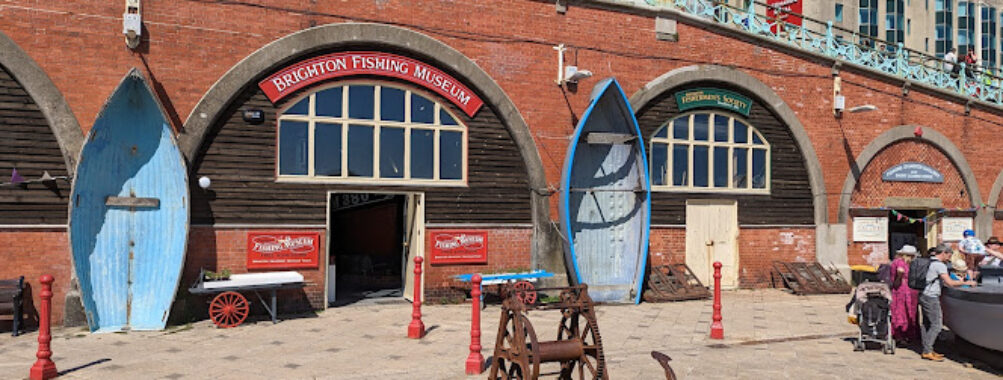
Brighton Fishing Museum
Table of Contents
Description
The Brighton Fishing Museum is one of those places that feels more personal than polished, and honestly, that’s part of its charm. Tucked along the seafront, it’s a volunteer-run space that tells the story of Brighton’s fishing community through old photographs, films, and all sorts of memorabilia. It’s not the kind of museum where you get lost in endless glass cases; instead, it feels like stepping into someone’s memory box. You’ll find weathered nets, faded images of families who worked the sea, and even boats that once braved the waves. There’s a sense of grit and pride here, and it’s hard not to feel a little humbled by the lives that were shaped by the unpredictable English Channel.
It’s not flashy, and it doesn’t try to be. Some visitors fall in love with that raw authenticity, while others might find it a bit too modest compared to bigger, more modern museums. But if you’ve ever wondered what life was really like for the people who earned their living from the water, this place gives you that glimpse. And because it’s run by volunteers, you often get to chat with people who genuinely care about the stories being told. That human touch makes it special, even if you notice a few rough edges here and there.
Key Features
- Collection of historic photographs, films, and memorabilia tracing Brighton’s fishing heritage
- Authentic fishing boats displayed in the museum’s archways
- Volunteer-run, offering personal insights and stories from locals
- Family-friendly atmosphere with engaging exhibits for children
- Wheelchair accessible entrance for inclusive access
- Located directly on Brighton’s seafront, steps from the beach
Best Time to Visit
If you’re planning a trip, late spring through early autumn is probably the sweet spot. The seafront is buzzing with life, and the museum feels like part of that wider seaside experience. On a sunny day, you can wander the beach, grab some fish and chips, and then duck into the museum for a dose of history. Winter visits can be atmospheric too—there’s something about hearing the wind whip off the sea while looking at old photos of fishermen braving storms that just hits differently. But keep in mind, Brighton can get crowded in the summer, so if you’re not into weaving through throngs of beachgoers, aim for a weekday morning or late afternoon.
Personally, I once popped in during a rainy afternoon in July, and it was the perfect escape from the drizzle. The sound of rain outside mixed with the smell of the sea air just made the whole experience feel more real. It’s that kind of place—you don’t just look at history, you feel it.
How to Get There
Reaching the museum is straightforward since it sits right on Brighton’s seafront. If you’re already wandering the promenade, you’ll likely stumble across it without even trying. For those coming by train, it’s about a 15–20 minute walk from Brighton Station, mostly downhill, which means the return trip might feel like a bit of a workout. Buses run frequently through the city, and many stop near the seafront, so public transport is a solid option. Driving is possible, but parking in Brighton can be tricky and expensive, especially on weekends and sunny days. Honestly, walking or cycling along the coast is the most enjoyable way to arrive—you get the sea breeze and the views before diving into the stories inside.
Tips for Visiting
First off, don’t expect a café or restaurant inside—it’s a small museum, and while you won’t find food, you’re surrounded by Brighton’s endless options just steps away. Same goes for restrooms: plan ahead before you go in. If you’re traveling with kids, it’s a surprisingly good stop. The exhibits are visual and tactile enough to keep younger visitors engaged, and they’ll probably love seeing the boats up close.
Take your time chatting with the volunteers if you can. They often have stories that aren’t written on the walls, and those little anecdotes can make your visit feel more personal. Bring a camera too—not for snapping endless selfies, but because the contrast of old fishing boats against the modern seafront makes for some striking shots.
One last thing: don’t rush it. Even though the museum isn’t massive, give yourself at least 45 minutes to an hour. That way you can actually soak in the details rather than just skimming past. And if you’re like me, you might find yourself lingering longer than expected, caught up in the quiet power of those black-and-white photos and the salty stories they hold.
Location
Places to Stay Near Brighton Fishing Museum
Find and Book a Tour
Explore More Travel Guides
No reviews found! Be the first to review!